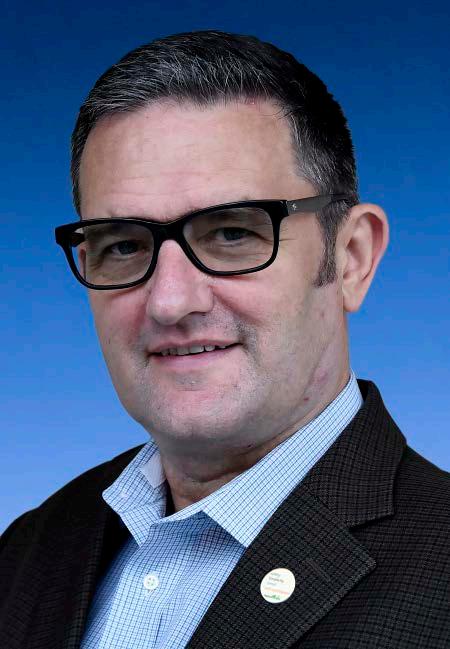
3 minute read
AIR PRODUCTS CLEAN ENERGY ON THE HORIZON
by LABI_Biz
FOR 55 YEARS, Air Products has operated safely in Louisiana, and today its 18 industrial gas facilities are sprinkled along the Mississippi River and the Interstate-10 corridor in Louisiana. Its newest commitment to build a $4.5 billion clean energy complex will make the state a leader in the United States’ clean energy evolution.
Air Products produces and transports hydrogen and other essential industrial gases to customer facilities in Louisiana, across the U.S. Gulf Coast and around the world. Its products touch the lives of consumers around the globe in positive ways every day, from enhancing the quality of frozen foods, to making a flat-screen LCD TV look amazing, to enabling MRI images of the body to help doctors treat an injury.
“We are a big part of things that people use every day, but they just don’t know it,” says Andrew Connolly, Air Products’ Vice President and General Manager, Low-Carbon Hydrogen Large Projects.
Air Products is also the only U.S.-owned industrial gas producer. The company got its start in the 1940s, when it was asked by the U.S. Navy to develop oxygen generators for pilots flying at high altitudes. Today, its operations all over the world employ more than 22,000 people, including 350 employees at its Louisiana facilities.
In 2021, Air Products announced plans to build, own and operate the Louisiana Clean captured for permanent sequestration.
“People want their kids and their grandkids to stay in Louisiana, and for that you need two things: you need good jobs, and you need a quality of life which includes the environment,” Connolly says.
This project builds off Louisiana’s skilled workforce in the process industries. It is expected to create 170 permanent jobs with a total annual payroll of $15.9 million, along with more than 2,000 construction jobs over three years. It represents Air Products’ largest-ever investment in the United States.
Energy Complex, which will produce more than 750 million standard cubic feet per day of blue hydrogen in Ascension Parish. “Blue” products are produced utilizing hydrocarbons as a feedstock, with the carbon dioxide (CO2) in the production process
Additionally, this project will take carbon dioxide that would normally enter the atmosphere, capture it, and permanently store it about a mile beneath Lake Maurepas. The CO2 is permanently locked into the deep layers of earth. Air Products must follow strict requirements from the EPA associated with CO2 sequestration. CO2 sequestration has been a safe and successful technology for over 50 years, with around 30 installations globally, Connolly says.
“It’s a very established industry with an outstanding safety record of preserving the environment in which we sequestrate,” he says.

The project has the support of the state and federal governments, and it supports the Louisiana governor’s goal of net zero greenhouse gases by 2050.


To provide information and answer local residents’ and other stakeholders’ questions about the project, Air Products organized a series of town hall meetings to provide education on what carbon capture and sequestration involve and its safety. The carbon sequestration occurs deeper than a mile below the Earth’s surface, and well below the established underground source of drinking water in this region of 3,400 feet. The process is protective of drinking or other water supplies.
Air Products also hosted a public demonstration of its seismic testing process, where public officials and residents went out onto the lake in boats to witness the seismographic surveying that will determine if the geology about a mile underneath the lake is suitable for the project.
Connolly says it’s important that Air Products identify the right geology suitable for sequestration. Lake Maurepas offers one of the best areas in Louisiana to permanently sequester carbon. The company believes the area has the perfect geology with a thick caprock layer, no major faults, no major salt domes within 10 miles and far fewer old oil and gas wells.. Further testing will determine whether the company moves forward with its plans.
While Louisiana’s residents are extremely familiar with oil and gas wells, and the oil and gas industry as a whole, this process of CO2 sequestration is new to them, Connolly says. “Being transparent is the key,” he says. “Our outreach activities are continuing, and they’re going to expand over the coming months. We are committed to being a safe, transparent, and responsible community partner in all things – our operations, our communications, and our business. We strive to continue our more than five-decade history of safe and responsible operations in Louisiana, both through this project and in future investments.”









